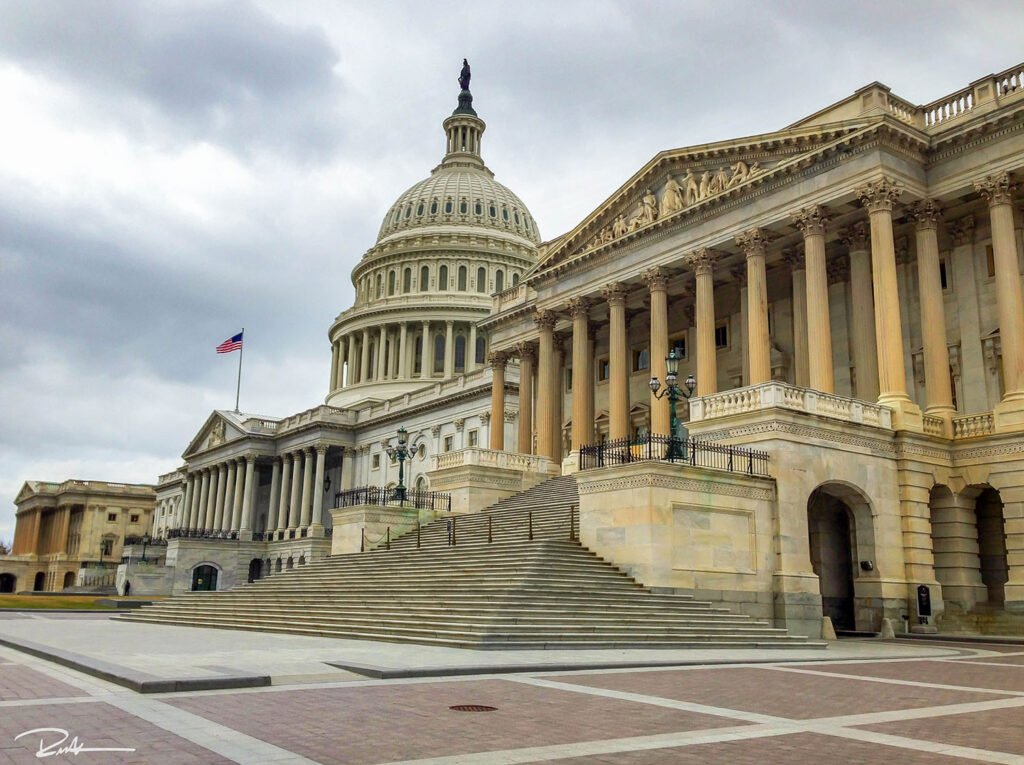
Washington, D.C., is a city that breathes history. As the capital of the United States, it’s where the country’s most significant decisions are made, where iconic monuments immortalize national ideals, and where world-class museums invite visitors to explore humanity’s greatest achievements. But beyond its grandeur and symbolism, D.C. is a vibrant, diverse metropolis with leafy neighborhoods, culinary gems, and a cultural heartbeat that reflects the spirit of the nation.
To explore Washington, D.C. is to walk through the pages of American history while engaging with stories that continue to shape the present and future. From the majestic steps of the Lincoln Memorial to the modern exhibits at the Smithsonian museums, from Capitol Hill to the White House, D.C. offers an unforgettable journey into the soul of a country.
The National Mall: America’s Front Yard
At the heart of Washington, D.C. lies the National Mall, a sweeping two-mile expanse of green space stretching from the Capitol Building to the Lincoln Memorial. Known as “America’s Front Yard,” the Mall is more than just a park—it’s the nation’s most powerful outdoor museum and ceremonial gathering place.
Walking the length of the Mall is an experience rich in symbolism and emotion. Begin at the east end with the United States Capitol, crowned by the Statue of Freedom and housing the U.S. Senate and House of Representatives. It is here that laws are debated, passed, and history is written.
As you move westward, you pass by the Library of Congress, the largest library in the world, and the Supreme Court, where landmark decisions are made. Every building in this part of D.C. contributes to the city’s role as the political nucleus of the United States.
Further along the Mall, towering above the landscape, is the Washington Monument, a 555-foot marble obelisk that honors George Washington, the country’s first president. Visitors can ascend to the top for panoramic views of the city and surrounding areas, gaining perspective on both the physical and symbolic layout of the capital.
Memorials That Stir the Soul
Washington, D.C.’s monuments are not only architectural marvels—they are expressions of national memory and purpose. The Lincoln Memorial, with its 19-foot seated statue of Abraham Lincoln and inscriptions of his most famous speeches, is a place of reflection and inspiration. Standing on its steps, one can’t help but recall Dr. Martin Luther King Jr.’s 1963 “I Have a Dream” speech—a defining moment in American civil rights history.
Nearby, the Vietnam Veterans Memorial, designed by Maya Lin, is a somber and poignant tribute to the men and women who served in the Vietnam War. The polished black granite wall, etched with over 58,000 names, invites quiet contemplation and personal connection.
Adjacent lies the Korean War Veterans Memorial, a haunting collection of 19 stainless steel soldiers set among juniper bushes and granite slabs, representing the uncertainty and danger of wartime patrols.
Finally, the World War II Memorial, with its fountains, pillars, and a view stretching to the Lincoln Memorial, honors the sacrifice and service of Americans during one of the most pivotal times in world history.
Each of these sites is more than just a landmark—they are places where the past speaks directly to the present, offering lessons of courage, sacrifice, and unity.
Smithsonian Institution: A Treasure Trove of Knowledge
No trip to Washington, D.C. is complete without visiting the Smithsonian Institution, the world’s largest museum and research complex. Comprised of 19 museums, galleries, gardens, and the National Zoo, the Smithsonian offers something for every interest—and best of all, admission is free.
- The National Museum of American History houses the Star-Spangled Banner, the original flag that inspired the U.S. national anthem, as well as artifacts from American pop culture, political history, and innovation.
- The National Museum of Natural History is a favorite among families and science enthusiasts, with its towering dinosaur skeletons, sparkling Hope Diamond, and fascinating exhibits about Earth’s biodiversity.
- Art lovers will be drawn to the Smithsonian American Art Museum and the Hirshhorn Museum and Sculpture Garden, which showcase everything from classical portraiture to cutting-edge contemporary works.
- The National Air and Space Museum, currently undergoing renovation, is a mecca for aviation and space exploration fans. Here, visitors can see the Wright brothers’ first airplane, the Spirit of St. Louis, and even Apollo 11’s command module.
These museums are not merely repositories of objects—they are active centers of learning, dialogue, and cultural preservation.
The Political Heartbeat: Capitol Hill and the White House
As the seat of government, D.C. offers unparalleled access to the nation’s political machinery. Capitol Hill is not just home to Congress; it’s a neighborhood filled with history, charm, and community life. Visitors can tour the Capitol Building (with prior arrangements), explore the majestic Library of Congress, and walk past the Supreme Court, where history continues to unfold through landmark rulings.
The White House, perhaps the most recognizable residence in the world, symbolizes the presidency and American executive power. While public tours require advance planning and coordination with a Member of Congress, simply standing before the wrought-iron fence and peering at the neoclassical structure stirs a sense of awe.
Nearby Lafayette Square is often the site of protests, rallies, and political expression—a vivid demonstration of democracy in action.
Beyond Politics and Museums: Neighborhoods and Culture
While D.C. is known for its grandiose institutions, it’s also a city of neighborhoods, each with its own personality and rhythm.
- Georgetown, with its cobblestone streets, Federal-style architecture, and upscale boutiques, is perfect for a leisurely afternoon. Take a stroll along the C&O Canal, or enjoy dining by the waterfront.
- Dupont Circle offers a cosmopolitan vibe with galleries, bookstores, and lively cafes. The area is also home to Embassy Row, a stretch of Massachusetts Avenue lined with diplomatic missions from around the world.
- Adams Morgan and U Street Corridor are cultural hubs where you’ll find vibrant nightlife, jazz clubs, and historic sites like the African American Civil War Museum and the Howard Theatre.
- Capitol Hill itself is a charming mix of 19th-century rowhouses, family-owned shops, and the iconic Eastern Market, where locals shop for fresh produce, crafts, and handmade goods.
A City of Diversity and Dialogue
Washington, D.C. is more than just the capital of a country—it’s a capital of ideas, cultures, and stories. Its population is incredibly diverse, representing every state, territory, and many nations of the world. This diversity is reflected in the city’s cuisine, festivals, languages, and perspectives.
Throughout the year, the city hosts events like the Cherry Blossom Festival, Juneteenth celebrations, Fourth of July fireworks on the Mall, and various cultural parades that celebrate everything from LGBTQ+ pride to Caribbean heritage.
The city’s cultural institutions—such as the Kennedy Center for the Performing Arts, Arena Stage, and the National Theatre—offer world-class performances ranging from opera and symphony to experimental theater and modern dance.
Education and Legacy
Washington, D.C. is also a city of learning. Beyond the Smithsonian, institutions like the National Archives (where you can view the original U.S. Constitution and Declaration of Independence), the Holocaust Memorial Museum, and the Museum of the American Indian offer powerful educational experiences.
Newer additions like the National Museum of African American History and Culture provide groundbreaking perspectives on the Black American experience, while the Museum of the Bible and Planet Word push boundaries in how stories and language are explored.
These museums don’t just inform—they provoke thought, encourage empathy, and invite dialogue about identity, justice, and humanity.
Final Reflections: A City That Tells America’s Story
Exploring Washington, D.C. is like traveling through the chapters of a living history book. Every monument and museum, every marble hall and tree-lined avenue, holds a piece of the American narrative. It’s a city that remembers triumphs and tragedies, that honors ideals and confronts its contradictions.
But D.C. is also forward-looking—a dynamic urban landscape where policy, art, science, and culture intersect. It’s a place where students debate policy in think tanks, where activists march for justice, and where artists reinterpret the past to inspire the future.
Whether you are a first-time visitor or a returning explorer, Washington, D.C. always offers more to discover. It is a city that invites you to learn, reflect, engage, and imagine. In the heart of the United States, you’ll find not just monuments of stone, but the spirit of a nation in motion.



